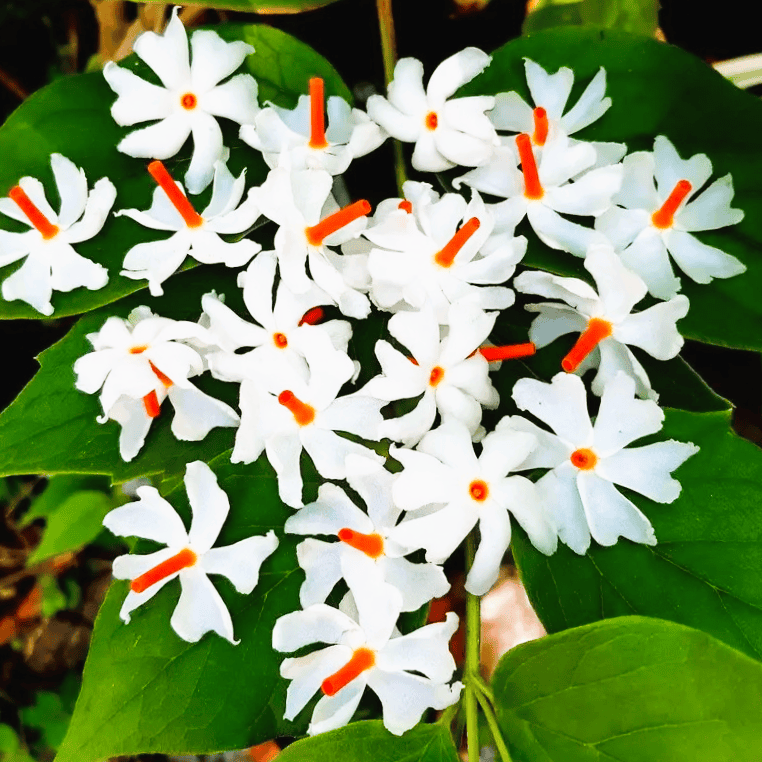
The season of colours is here and with it comes the riotous festival of Holi! While you become well prepared with coconut oil and moisturizer layer to protect your hair and skin, your plants might need a little more help from you to recover from the colour stress. Even though we prefer to take the celebrations outdoors, with the colours in the air, you can be assured that your plants also get a coat of gulaal - and from there it's a steady spiral of decline.
Some of the most common chemicals found in colours are Lead oxide, copper sulphate, aluminium bromide, mercury sulphite. These are not only detrimental to human and animal health but also cause significant damage to plant health over time. Let's look into how we can protect our plants post this vibrant festival.
TOXICITY TOLERANCE

Sadly, Holi colours have a detrimental effect on the plant's overall metabolic health. Spotted leaves, discolouration and wilting are common signs of this stress. Though most plants are strong enough to wade through it, the small sapling of weak varieties often succumb to the problem - leading to drying and death of the plant. Since the plants do not immediately show signs, it becomes even more difficult to bring the plant's health back once the problem symptoms manifest.
Dry colours are also no friends to our green friends. Often, the synthetic colours coat the leaf surfaces, suffocating the stomatal pores and leading to photosynthesis rate reduction that brings down the plant's health. If the dry colours persist on the leaves, due to water vapour they seep into the pores, effectively blocking them. If the plant soil gets some colour, it is even worse for the plants. The coloured water percolates in the soil down to the roots, from where it is distributed to the plant leading to a chemical buildup in the plants. This chemical buildup manifests itself as yellowed leaves and wilted plant parts.
So, is there no solution, you might ask. Sadly, there is no win-win situation. But, there are some ways in which we can ensure that the plants can recover well from the Holi stress.
DAMAGE CONTROL

1. Dusting and Patting
Lightly dust the leaves to remove the colours, use a feather duster instead of cloth and brush gently so that the colours do not settle in the pores. If you are unable to get the colours out of the crevices, use a damp cloth and pat the area to absorb the colour. Rubbing the leaf will only lead to the colours getting reabsorbed in the stomatal pores.
2. Scraping and Flushing
If the soil has accumulated the colours, do not water the plant. The colours will seep into the roots, bringing with them another set of problems. Gently scrape out the top layer of soil and discard it, post which replenish the pot with fresh soil. If colour-mixed water has gone in the soil, try flushing the soil out with fresh water. Though a small amount of colour will not affect the plant - the soil sitting in the solution will eventually kill it.
Well, now that we have done the damage control, it's time to actually enjoy the festival. Did you know, plants are excellent options for DIY colours - that are not only organic but are completely biodegradable?
MAKE COLOURS FROM PLANTS

1. Rose Petals, Hibiscus Flowers: Dry the Red Rose Petals and Hibiscus flowers and grind them to a powder to get organic red colours.
2. Beet Roots: Chop 5-6 Beet Roots and let them sit in a gallon of water for a few hours to get a dark pink coloured solution.
3. Marigold, Shevanti flowers: Dry out Marigold and Shevanti (aka Chrysanthemum) flowers and grind them to a powder to get various shades of yellow.
4. Gulmohar, Spinach: Plants like Gulmohar and Spinach leaves can be dried out well and then ground into a fine powder for organic green colours.
5. Amla: Take 4-5 tablespoons of Amla (Indian gooseberry) powder, add boiling water to it, mix well and keep it overnight. Due to oxidisation, a dark black coloured solution will be formed.
Now that you have efficient methods of not turning your home into a Chemistry laboratory, we wish you a very Happy, Safe and Biodegradable Holi!

Need Help?
If you have any questions about your plants, you can chat with our Plant Experts to assist you with the same! (PS. you can reach out to our Plant Experts for pretty much any query related to your plants 😉)
Looking to add to your Plants collection? Check out our Free Plant Picker Quiz for some super-smart recommendations.


